Paid Media
Updates by Casey Anderson, Paid Media Director
Last month we started seeing more movement in areas of paid media we’ve long anticipated, plus international paid media news that could have much larger impacts on the industry.
Chat GPT Ads
When big companies begin to hire in new departments, it’s a pretty good indicator of things to come. Last month, it was noticed that OpenAI was hiring a Growth Paid Marketing Platform Engineer, presumably to begin developing a way to monetize the free users of the platform. Evolving this platform into an ads-based engine means more brands and advertisers having access to a 700 million audience of weekly users. It also means advertisers will need to determine how to best invest their marketing budgets.
UK Testing of Meta Subscriptions
In a tumultuous economy, the last thing advertisers want is news about how their already expensive audiences could become even harder to reach. As Meta continues to look for ways to be more self-sustaining, it has expanded its no-ads subscription model (previously introduced in the EU) to users in the UK.
The subscription fee allows users to browse Facebook and Instagram without being served ads. The fee is £2.99/month on the web or £3.99/month on iOS and Android for the first account, with additional accounts costing £2 or £3, respectively.
Meta introducing this test to the UK market will test how important it is for users to go ad-free. For advertisers, this option could shrink available inventory, shift targeting accuracy, and change how budgets need to be allocated for maximum ROI.
While in Europe this could be considered a big win for privacy, we’ll have to wait to see if/when it will happen in the US.
TikTok and Its US Buyer
The will-they/won’t-they drama of TikTok continued in September with a signed executive order that paves the way for American ownership of the beloved Chinese social media platform. According to NBC News, “in the new framework agreement outlined in the executive order, TikTok’s Chinese parent company ByteDance and its affiliates will own less than 20% of TikTok, while ‘certain investors’ will retain 80% ownership.”
While implications of TikTok’s American ownership under this administration are plenty, we still do not know who the new owners will be and what it will mean for the platform’s algorithm. As of right now, we’re biding our time in hopes that advertisers will still see strong results, regardless of ownership.
SEO
Updates by Brett Woodward, Sr. SEO
Google makes tracking Trends more difficult
What happened: Google removed the &num=100 functionality in Search around Sep 10th.
What it was: If you added that parameter at the end of the google search result URL it would update the results page to show 100 results instead of just 10.
Why it matters: Most rank trackers heavily rely on that parameter to do position tracking and lots of them stopped working properly once this happened. AIs and LLMs use them too apparently.
What’s been happening since: Lots of Google Search Console (GSC) accounts are showing big drops in impressions and large increases in average position.
What everyone’s yelling about:
- Rank trackers need to reengineer their tools and have to run 10 separate queries to get the same results.
- API costs for rank tracking tools will need to adapt their process or charge more for the same amount of data.
- Because these rank trackers have stopped working, people are attributing a large portion of the impression loss reported in GSC to rank trackers doing searches, rather than people.
- Previously the SEO industry was aligning around “the great decoupling”, an increase in impressions and decrease in clicks, that was thought to be related to AI Overviews, but now people are questioning if that was the primary driver of the trend, or instead impression volume was driven by a massive increase in rank tracking/scraping from LLMs.
What do we do about it? Add another point on the board for “data isn’t perfect”. It was already a very confusing time in general for SEO-type metrics and reporting and this adds to the complexity. Some say the new GSC data will be more accurate, others expect tools/tech to find new ways to do the same things they’ve been doing. In fact, we’re recommending re-evaluating digital marketing metrics across digital marketing.
In this era with so much noise and uncertainty around search data what makes the most sense to me is to just double down on creating value for target users, continue to invest in strategies we know build visibility in search engines and AI tools, and finding broader ways of reporting on that progress.




